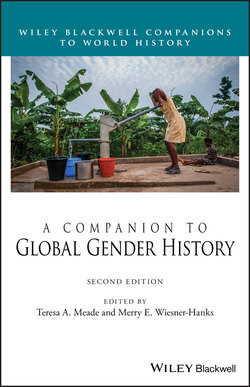Читать книгу A Companion to Global Gender History - Группа авторов - Страница 63
Conclusion
ОглавлениеMangbetu figural pottery survives in great numbers, giving the impression that it must have been what was traditional, when in fact it is not. Material sources can be misleading because scholars interpret the past based on the objects that survive, thus giving them more importance than they had in the time they were produced and used. In the auction of Sylvia Plath’s and Ted Hughes’s belongings, there were many more objects belonging to Plath than to Hughes. From this difference in quantity it should not be concluded that Plath owned more things than her husband. Rather we have to interrogate why exactly it is that more of Plath’s things were sold in the auction. The question of why something has survived (or why something has not) has driven the scholarship of many who work with material objects, and is another example of the interpretative value of studying such sources. As seen in the example of objects found in the archaeological site of Qumran, their mere survival becomes a question of research.
The examples highlighted in this chapter demonstrate the various ways in which material objects can be studied, particularly for researching the history of gender. Objects raise questions that often put gender at the forefront. For example, if we were contending with a text written in premodern times, the probability of the text having been written by a man for a man would be very high. However with crafts and other objects of daily use produced in premodern times, the probability of women being involved in either the production or the consumption is much higher, and having to think about both female and male actors then forces us to consider gender and how it functions in society. Discovering a piece of Hadley furniture produced specifically for a woman makes us question why a woman would want to own a cupboard and make it known that it was hers and also why a man might not have had the same concerns.
Objects also force scholars to contend with the body, which is gendered. In the case of the lotus shoes, we saw how the female body had to be transformed to fit into a particular shape and size of footwear in order to satisfy male sexual desires. On the other hand, with the example of the bicycle, it was the machine that had to be transformed for women to be able to use it. This was not because women’s bodies were incapable of riding early bicycles, but because of the clothes they were expected to wear so that their bodies were appropriately gendered. Following the history of the bicycle, then, raises issues of gender in multiple ways.
The gendering of bodies was also seen in the examples of silk garments elite men and women of Europe and North America chose to wear in the eighteenth century. In the case of the dress worn by Anne Shippen, it was tailored to accentuate certain parts of her body. The men’s gown, on the other hand, had a tailoring that was not so much about highlighting particular body parts but rather about allowing the body freedom from the restrictions of other types of clothing. The portraits of people wearing these clothes prove that women and men used objects to fashion particular characteristics of their identities, such as worldliness or industriousness (fertility can be considered a sort of industriousness). At the same time, these objects also impacted the lived experience of these people. The dress that Anne Shippen wore could be quite restrictive, requiring the aid of a tightly bound corset so that her body would be displayed in the way that was deemed fashionable at the time.
The importance of objects in our lives and the role they play in constructing gender norms is something that Sylvia Plath was aware of. The opening stanza of one of her most famous poems, “Daddy,” which has been interpreted by some as a critique of patriarchy, precisely uses an object to highlight the oppression that the narrator feels:
You do not do, you do not do
Any more, black shoe
In which I have lived like a foot
For thirty years, poor and white,
Barely daring to breathe or Achoo.
Plath’s use of material objects as symbols and metaphors in her poems shows the evocative nature of objects (Turkle, 2011). Perhaps one of the reasons that the auction of hers and Hughes’s belongings had more of her things was because she understood the power of objects and therefore valued them as such.
